Last month, my younger son William and I saw Toy Story 3 in New York City in 3D. I loved it! Yes, you read that right. Miss Sarah, the anti-media-for-young-children Waldorf teacher, absolutely loved Toy Story 3.
Those of you who’ve seen it know that the ending is a tearjerker, but I nearly melted in a puddle of my own tears, thoroughly embarrassing my 15-year-old son. The movie was especially heart-rending for me because my older son Harper is the same age as Andy, the boy to whom the toys belong.
Harper was about four years old when the original Toy Story was released. At the time, we lived in Hollywood, my husband was working in the entertainment industry, and we were invited to the premiere. As perks, we were given full-size Woody and Buzz Lightyear toys, which Harper played with for years.
In Toy Story 3, things have progressed in real time. Andy has grown up and is getting ready to head off to college. And guess what? Harper is 18 now and leaving for college in a few short weeks. Like Andy, he is in the process of saying goodbye to his toys, his childhood, and his parents, so the poignant ending of Toy Story 3 left me crumpled in a sea of wet tissues.
Not only did Toy Story 3 have personal relevance for me, but I also appreciated its compelling story, great dialogue, engaging characters, and its technological sophistication. It’s the first movie I’ve ever seen in 3-D, and it really was a marvel, perhaps one of the best animated movies ever made.
But in spite of my enthusiasm for the movie, I would not recommend it for children under nine. Bracing myself for the backlash, I can already hear the cries of protest: “But it’s rated G!” “We took our four-year-old to see it and he LOVED it!” “Come on, it’s Disney. It’s wholesome family fun.”
Let me explain my thoughts . . .
First, it’s scary.
There are evil villains in the form of a cuddly teddy bear named Lotso, and his accomplice, Big Baby, an oversized baby doll with one permanently drooping eyelid. Teddy bears and baby dolls are familiar to, beloved and cherished by nearly every child. Do we really want to give our children the message that these objects are not to be trusted? That they can turn evil and mean? Do we want to risk that our children will be afraid to sleep in the same room with their teddy bear or dolly after seeing the movie?
And in keeping with the Disney formula, there is an intense climax scene full of adrenaline-pumping suspense in which (SPOILER ALERT) Andy’s beloved toys have been picked up by a trash truck and are headed toward incineration, thanks to the evil machinations of Lotso. Because the characters of Andy’s toys are so superbly crafted, we feel affection for them and care about them, which leaves us filled with dread and on the edge of our seats as they appear headed for certain death.
While this kind of suspense can be a thrill for older children and adults, it is not healthy for young children. In Waldorf education, our primary goal is to teach children from birth to the age of seven that the world is a good, safe and loving place. We want them to feel happy to be here, not full of fear and anxiety.
Toy Story 3 does not convey that message to young children. And yet, because it is rated G, parents are flocking to it in droves with children as young as two, three and four.
Waldorf educators recognize a big shift that occurs in a child’s consciousness during the ninth year, commonly referred to as “the nine-year change.” At around this time, a child loses her sense of being at one with the world. She becomes aware that there is evil and danger, and may feel a sense of separateness from her family. She begins to experience her own individuality, which can feel lonely.
But if we have given a child a solid foundation of warmth, love and security during her early years, she will be better able to handle the nine-year change with ease and confidence.
After the nine-year change, when a child has a heightened awareness of good and evil, stories such as Toy Story 3 can actually feed a child. At this age they actually need stories in which there is conflict and danger, and evil is overcome by good. At this age they can handle (and even enjoy) suspense. After the age of nine, a child usually has a firm grasp on the difference between reality and fiction, which a young child does not.
So I urge you to go out and see Toy Story 3. The adult-oriented humor will make you laugh out loud. If you’re like me, its poignancy will make you cry. But please, leave your young children at home. Remember, it will be available on DVD when they are older, and by then, we’ll probably all have DVD players that will even play it in 3D!
But if you’ve already seen it with your preschooler, don’t lose sleep worrying that you’ve done irreparable harm to his psyche. As parents, we do our very best for our children with the information we have.
When I was a young mother, I hadn’t yet discovered Waldorf education and didn’t know then what I know now about children and their development. I must confess that when Harper was four years old, I took him to see the original Toy Story, which had its scary moments, too.
But, like Andy, he’s grown up into a young man with a good heart, ready to make his mark in the world.
Have you seen Toy Story 3? What did you think? Did you take your children? I’d love to hear your thoughts!

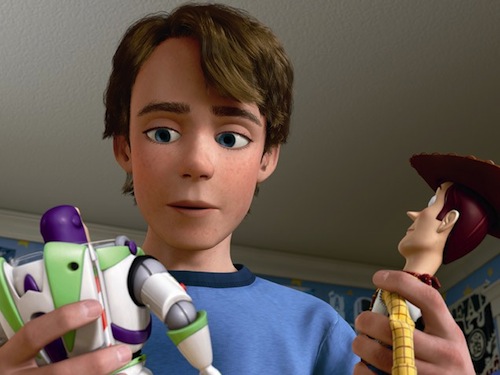
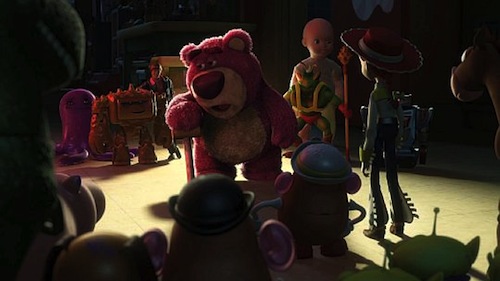
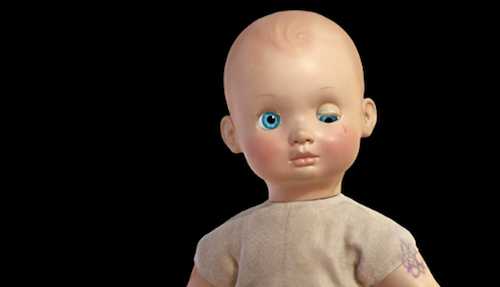
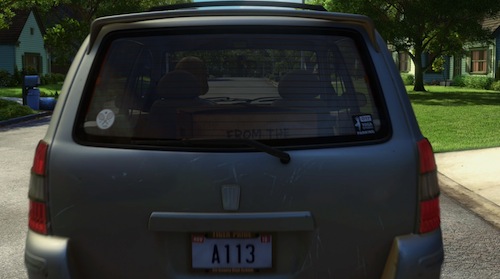
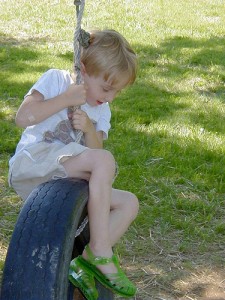
35 Comments
My five year old was taken to see it by her grandparents and found it quite frightening.
We try to limit movies, and don’t have TV, but I have found a few movies I like for children, my favorite being My Neighbor Totoro. It’s very sweet and engaging without being at all scary.
My boys loved Totoro when they were young. It was one of the few carefully chosen videos we kept after we made the decision to turn off our TV.
I have an 8, 6, 4, 11 months and we saw it about a month ago. No one thought it was sad except me (I cried too, there and when we got home!). I’m very intrigued by your comment that at 9 years of age a big shift in consciousness occurs. Would you please refer me to books/literature, anything that would help me understand more about that?
Sure, Leslie. If you wanted to read about it from the source, you could take a look at Rudolf Steiner’s The Child’s Changing Consciousness. An easier read, and highly recommended book on parenting, is Navigating the Terrain of Childhood by Jack Petrash, a long-time Waldorf teacher and parent, who writes in an easy engaging way, making complex ideas understandable.
Both these titles are available here at the Moon Child Bookstore.
Sweet, Sarah!
We just saw it and I had much the same response. Although Dylan recently turned 18 and Tessa won’t be far behind, I am not quite where you are–good luck and know that I am feeling those goodbyes for you. Just remember, he’ll be back with a new and exciting relationship for the two of you to share!
Sweet, Sarah!
We just saw it and I had much the same response. Although Dylan recently turned 18 and Tessa won’t be far behind, I am not quite where you are–good luck and know that I am feeling those goodbyes for you. Just remember, he’ll be back with a new and exciting relationship for the two of you to share!
More information on the developmental changes around the age of nine is available in my article on The Nine Year Change at http://www.waldorfinthehome.com (use the search engine on the site). We also sell an audio CD of a workshop on this topic given by Daena Ross at one of our conferences.
Other resources for understanding this developmental change include my article on The Nine-Year Change and an audio CD of a workshop by Daena Ross on this topic. Both are available at http://www.waldorfinthehome.org–use the search engine on the site to find them.
Great, Rahima. Thanks!
Sarah, I absolutely agree. I loved the movie and went to see it with my husband – without my daughter. It is way too scary for young children, inappropriately so. I know many mothers of young adopted children who also won’t let their children see it because of the abandonment issues that it brings up.
I want to ask, though, about something in your post. I like the ideas you described about the way a child views the world until age 7, and then the change that comes around age 9; though my daughter is 3, I can see from my experience with other children that this is pretty accurate. But then how do we handle telling children about safety issues, such as talking to strangers,not opening the house door by yourself, inappropriate touch, etc? These things are already coming up in our home (no inappropriate touch is happening, don’t worry! – just seeing reason to address it…) and I hate talking about these things with my 3 year old. I don’t want to take her innocence away but how do you address these things with children without destroying that wonder and innocence?
Thanks for your comment, Katie. I’m glad you enjoyed the piece.
Of course we need to teach our preschoolers about potential dangers, but the key is to communicate in a calm, non-alarmist, and reassuring way. We want to let them know that we are adults, we know what’s best for them, and we will keep them safe.
Taking a child firmly but gently by the hand, one can say, “We must always remember to look both ways before crossing the street,” in a calm, authoritative way; rather than shrieking, “Emma! Don’t you EVER run out into the street AGAIN without looking both ways! Don’t you know you could have been KILLED by that car?” Children are very intuitive, and if we are fearful, we convey that fear to our children.
That illustration is an exaggeration, but I hope it gives you an idea of difference in how we can communicate safety to our children.
bravo!! thank you so much for putting this out there. i cringe when i hear people talking about the movies they have taken their young children to see. as parents, we are not trained to think about things from these perspectives. we want to show cute, fun movies to our children as a *treat*, not recognizing that it is hollywood’s role to dramatize everything leaving a lasting effect on our young children’s psyche.
Great article, Sarah. And you are so right that we want to let our children know that we are adults and we will keep them safe. Sometimes in our attempts to educate children about dangers, we forget that it really is the adult’s job to keep a small child safe.
Dear Sarah,
I’m so tired, I think I may ramble: apologies in advance!
I loved this article, and couldn’t AGREE with you more. So many times parents do not realize the context or lack of context in which little children see things. They treat them as miniature adults able to understand irony. Thank you for writing this. As a Waldorf parent with a now 6 year old (yes…the 6-year-old-change-you’re-not-the-boss-of-me time, lol), who has never gone to a movie, I completely identify with your opinions. I hope your views also reach folks who are open, but who have not been introduced to these concepts.
One area, where I probably have missed the mark is with food. We started going to a Kinesiologist and have now given up wheat, soy, peanuts, milk etcccccccc. And now I understand that MSG hides in most packaged foods under code names like “spices, natural flavors,” etc. So Eva hears me commenting on these things. As a very bright, sometimes beyond her years) child, she gets what I’m saying and hears me complaining with a wee bit of outrage whenever I bought something I thought was good only to find these little euphemisms for MSG ( a terrible neuro toxin) hiding there. I hope that my misgivings in these areas have not booted her from her garden of eden state prematurely. As an early talker (6 months with ridiculously clear enunciation….complex sentences by 2) I have always tried to protect her from adult conversations, sarcasm, over intellectualism, which many adults have tried to pull her into…and now I’m not so sure I didn’t fall into the same trap 🙁 I intend to share with her kindergarten teacher (Laura Ferris) when school begins, but til then, would love your thoughts.
We all do the best we can, Rebecca, but none of us are perfect and none of us will do the right thing for our children all the time. By being conscious of your own anxiety about MSG, you’ve taken the first step to changing how you speak about it in front of your child.
As one of my colleagues recently pointed out, every day is a new beginning for us as parents. When we wake up to a new day, we can make a conscious effort to do things differently.
And we must also decide to be gentle with ourselves when we make the inevitable mistakes.
Hi Sarah – great article. I took my 10-year old to see it, who loved it. My husband and I both got all teary at the end, which he didn’t understand of course! Unfortunately, there was a small child nearby who went into a fit of crying hysterics during the incineration scenes – it just broke my heart. I am not certain why the adult with her didn’t take her out of this situation?? My son, at 10, is now finally able to see some of these movies. I was vigilant during his first 7 years to not expose him to much of anything at all, media wise. This is a good thing to make the effort to do. It is ok to say to a child, “some things you need to be older to do.”
I had a similar experience, Catherine, when I took my boys to see Finding Nemo years ago. There was a toddler in the audience who was screaming in terror when Nemo, who has lost his mother, is being chased by a shark. The crying was prolonged, and I wondered why this mother wouldn’t take the terrified child out of the theatre. To this day I wonder if I should have said something.
Finding Nemo is another classic example of Disney’s common themes: losing a parent (think Bambi and The Lion King) and terrifying scenes of peril. Losing a parent is one of the greatest fears of young children (one reason children love to play “orphans” — it helps them process the fear). Why would we want to heighten that anxiety?
But because the movies have no blood or sex (At least not overtly. Barbie and Ken were pretty dang suggestive in Toy Story 3!), they’re rated G, and so parents will continue to flock to them with their preschoolers.
I look forward to writing one day about what Disney has done to fairy tales.
Thanks, Sarah!
Thank you Sarah, I linked your piece on my blog. Kind regards, Lisa
Sarah, please do write that piece on Disney and fairy tales. Hope your summer is splendid. Your workshop on coloring and painting looks so inviting and soothing. I want to be there! Blessings, Lisa
I totally agree with you about this movie!!! I bawled, embarrassed my two tweens. And it was SCARY!!! I was not completely surprised, being the last movie i saw by Disney was up and and finding nemo and those movies intros were both about death. Both subjects a little horrifying to open with for children in my opinion. Great review!!!!
Great article! My friend took her 2 year old to see it and I was a little mortified. My kids, almost 3 and 5, have never been to the movies because I just haven’t seen anything of quality to take them to. As of now, they do not watch any tv or movies in our home. They have seen some in the past though, when we would have a special pancake/movie night when my husband would be working late. It was sort of our special meal together, just Mommy and the kids, and it was considered a HUGE treat. We pretty much only watched Mary Poppins or the old Winnie-The-Pooh, or an episode of Mr. Rogers. (I’m not a fan of Disney though, and I think they’ve pretty much ruined fairy tales for young people who have only been exposed to them through their interpretation.) I’m glad to hear of some Waldorf parents that do allow the occasional movie as a treat. Perhaps I’ll consider letting them watch something again in the future. If only someone would make a decent kids’ movie!
Thanks for your comment, Erika. I have in mind a future post I’ll write on what Disney has done to fairy tales.
A very enlightening experience I would sometimes present in parent evenings at the Waldorf school was to have parents watch a scene from a Disney movie (Sleeping Beauty, for instances), and then present the same scene from “Little Briar Rose” (the original Grimms name of what we now know as “Sleeping Beauty”) as a Waldorf puppet show. After both experiences, I would ask parents to compare and contrast the differences.
Thanks for the warning on this one. I’m always shocked by what is rated G actually. We aren’t anti-TV or anti-movies at all, we do watch things but very, very filtered, lol. What I’d love to see is a list of “totally okay and gentle movies” for little ones. Have you ever seen such a list? Now I know there is certainly no such thing in the mind of many Waldorf parents but for those of us that are sort of watered-down Waldorf families?
Seriously… it’s just a movie. And… Iuno, it seems like every kids movie since the dawn of disney has shown good and evil, and people doing good and bad things *cough*snowwhite*cough* so this is… no different. But good post anyway. ;P
Thank you for the valuable post. This is important information to share, as we aspire to more conscious parenting!
I appreciate this post. My girls are 11 and 14 and have no desire to see it. I am interested in thoughts you have about the Waldorf home with teens. I am hoping to write about it soon …my daughter begins public high school tomorrow and I have been pondering what it means to be a “waldorf family” as my children move beyond toys and the imaginative world.
Don’t forget the scary monkey! We went with a group of kids and their parents, and many of the children were frightened of the monkey and his loud screeching!
One more comment about some of the most gentle shows geared to the young child. I recently read a study of child behavior after watching some of the gentle educational shows which said that children’s behavior actually worsened. Children are so imitative that they remember and imitate the 22 minutes of poor behavior on the tv and actually miss the 2 minutes of “the lesson” or resolution. How much better to teach morals or behavior through the fairy tale or story.
Yes, Sarah. And studies have also shown that immediately after a period of screen viewing, children usually are more hyper. Children are using so much energy to grow. They really are bundles of energy that need to be in movement. After sitting passively for a half hour or more, that energy builds up and needs to be released.
It doesn’t matter if they were watching Mr. Rogers or Pokemon.
So if we turn on the TV to pacify them so that we can get dinner made, we must be prepared to pay the price once the “OFF “button is pressed.
My daughter, who just turned 5 saw this with my husband. I wasn’t to into her seeing it as I am very reserved with what I allow her to watch and to view. My husband really pleaded with me to take her and I had to allow him to use his own judgement with her. She loved it and wasn’t scared by it or lost any trust. That was kind of puzzling to me, as she posses the same imagination that I do.
While we are not tv free(we were for a while) I am trying to find a way to not let popular culture come into our house, but at the same time not make her feel so removed from the “world”.
A while ago while in the store I found Charlottes Web on video in the bin for like 4 dollars. I remember how I loved the movie and the books when I Was a little girl and I so badly wanted to share that with my daughter. I thought long and hard about it before I let her see it as I didn’t want the death of Charlotte to be to traumatic to her. She surprised me again with being so into the story. We are reading the book right now and she is just obsessed with spiders and pigs. My mother swept away a spider (a rather massive and terrible looking one to) and she cried saying that Nanny had killed Charlotte.
Here’s a note I’ve been wanting to add to this discussion.
Children often become obsessed with movies that frightened them or have scary elements. I have observed many children over many years act out the scariest scenes from Disney (and other movies, like Harry Potter) on the kindergarten playground over and over again. Remember The Lion King? I can’t tell you how many children I have watched over the years reenact the death of Mufasa!
I would not discourage this play, because I understand that children process that which they cannot make sense of through their play. Acting it out allows them to feel like they have some control over the outcome, instead of being the powerless little beings they really are.
So parents will often think (and I used to do this), “Oh he LOVES that movie! He plays it all the time!” Not realizing that the child is playing it to overcome fears that it triggered.
These thoughts are not in direct response to any particular comment left here, but rather thoughts that have come up in reading the many thoughtful posts in this thread, which I thank all of you for.
Oh Lion King! To this day, I am still unable to even watch that movie because of that. The worst one for me is Dumbo. I will not watch that or Bambi. Why do they have to kill mothers in children’s stories?
Your reply does provoke thought. I wonder how we figure out if they are acting through fear? If you were to look at children’s play, how would you see the fear? As I look at my own child play I sometimes cringe when she gets rather forceful in her play, but I never see it as fearful. Hmmm. Gives me something to watch in her play.
A thousand thank yous for this! I feel like I am in the minority that we don’t allow our 6 year old son to see rated G Disney/ Pixar type films. The ratings mean nothing as far as I am concerned and for all of the reasons you so eloquently pointed out. When we have the rare family movie night at home, we usually go for nature flicks or old musicals and that even canbe much for him sometimes. Well meaning family say that because he’s a 6 year old boy who can talk a brave face, that he seems “ready” for more mature movies. I try to explain, it’s all talk. He likes perilous scenarios in his imaginary play where he is in control. He does NOT like when they swirl past him and he gets overrun by anxiety and fear. *sigh* I could go on and on. I am going to forward this to everyone I know and I think I want you to be my movie reviewer from now on 🙂
Sure wish I had read this post before taking my 3yr old son to see TS-3. I heard so many rave reviews for it that I was certain it was going to be appropriate for him to watch but like you I also thought some of the scenes were quite scarey for little ones. Luckily or un-luckily for me my son lost interest a few minutes into the movie thanks to the seemingly endless movie previews shown before it even started.